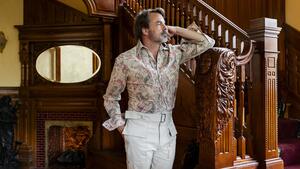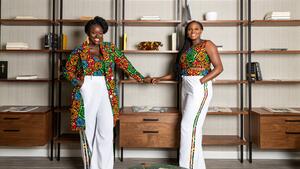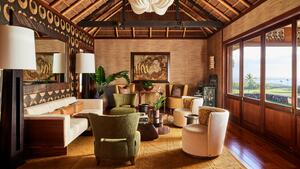The 50 States Project is a series of candid conversations with interior designers across the country about how they’ve built their businesses. This week, Fenwick Island, Delaware–based designer Katie Winnington of C&E Furniture tells us how she navigates the seasonal cadence of work in a beach town, how she’s looking to shake up the oceanfront aesthetic, and why she put design front and center while revitalizing her family’s furniture store.
You took over and transformed your family’s furniture business. Can you tell me how that happened?
My grandfather, my mom and her brother purchased the business in the late 1970s. At that point, it was a big footprint—their showroom was 30,000 square feet—but they incorporated a curated element to it. Maybe they had this sofa back three times, but they were particular about creating very elevated vignettes for it. They were very successful at it for a lot of years. In the early 2000s, my grandfather retired, and my uncle ended up moving away, so my mom was by herself. I was just out of college, so I jumped in and was helping her here and there with stuff. They had always lightly dabbled in the design end of things, and I was pretty good at that. But the big-box model so many furniture companies have now had fully taken force, and she just could not compete. The footprint of the store was just too much for her, and she decided to retire and sell the property. That’s when she approached me and said, “Would you be interested in taking over the name?” So that’s what I did.
What did that opportunity look like?
I realized that the curated aspect that had always made our company special was completely lost because the people who were shopping that kind of brand weren’t interested in that detail—they can go get these things [for less] from big vendors. I definitely saw very early on how integral design is to the home furnishings process. When I took over the business, I rebranded it, we moved—I kind of changed every aspect of it. In all honesty, I probably could have changed the name, but I kept it for sentimental value.
What did that overhaul entail?
We moved to Fenwick—I’m on the beach now, but the store had been in Selbyville, Delaware, about 30 minutes inland—and opened a boutique-style showroom. My model behind it has been that we’re going to offer people a design firm–level experience, even at the retail level. We have tiers to what we do, but going back to the opportunity: I could see how integral the design aspect could be. Even if you are just buying a chair, it means so much to you. That chair matters—it needs to make sense and it needs to speak to you. So that’s what I did.
We would be doing furniture for people, and they would say, “I also need lighting,” which we had. But then they’d ask about a backsplash, or they’d be like, “Hey, while you’re in here, this is my bathroom. What vanity do you like?” For me, it was clear: This is where we need to be.
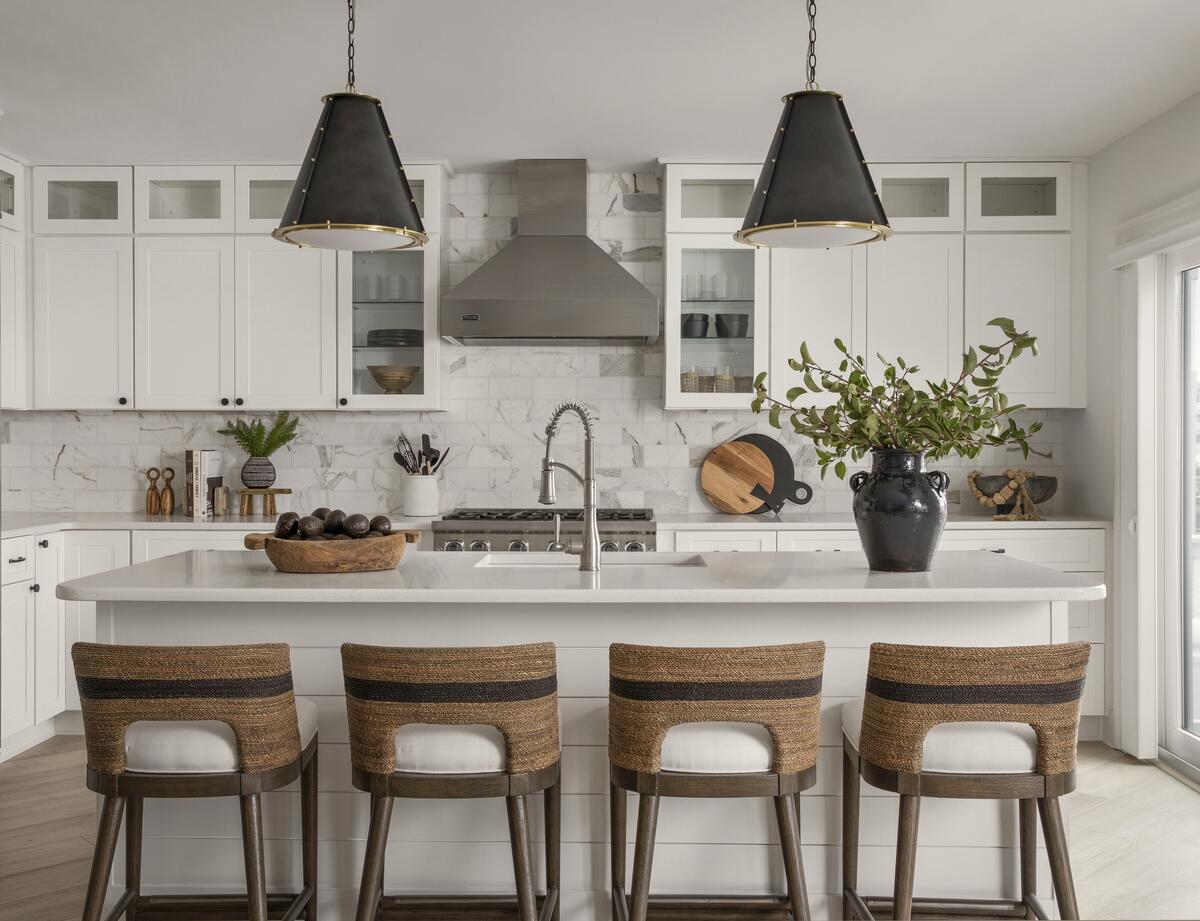
Did you change what brands you were carrying or representing? Did you change the price point? What shifted?
That’s part of the difference between what my family originally started and what had to change: They were selling the idea of a space to people, and I don’t think they were ever very driven by price point. But in that big-box model, it became price point driven, and all the romance of it got lost. What I wanted to do was bring that back, but on a boutique level, because that’s really where that customer is—someone who wants a more elevated experience. So yes, the price points did change, because we were driven more by the look we wanted to showcase. Some brands did change as a result, and some stayed.
What was your early approach to offering design services, and how has that evolved?
It was all in one bucket at one point. We were meeting people where they were, and we were there to help them. Now, there are more buckets. We’re able to say, “This client is calling me for a new home build—they’re looking for help with every aspect of their home’s design,” versus someone walking into the shop saying, “I didn’t even know I needed a designer, but I’m here, I like what you’re saying, and this makes sense to me. How can you help me?” For something like that, we have what we call “full-furnishing design,” which can be soup to nuts. I mean, it could be, “I bought a 3,000-square-foot house and I don’t have a thing for it.” And it makes sense that you need help when you’re working with that many pieces. We’re going to go into those jobs like we would for any full-home design client and do everything that you need.
We also offer a “shop design” service, something that’s not quite as involved. In those cases, we’re sitting down with the client and taking a little bit more time to hold their hand through the process while making the best recommendations we can based on the information we have.
How have you built a team to work in all of these different ways?
We have showroom designers who are in the shop offering full-furnishing and shop design services, and then I do the full-service design with another designer and an assistant. We’re kind of two separate entities even though it is all one business.
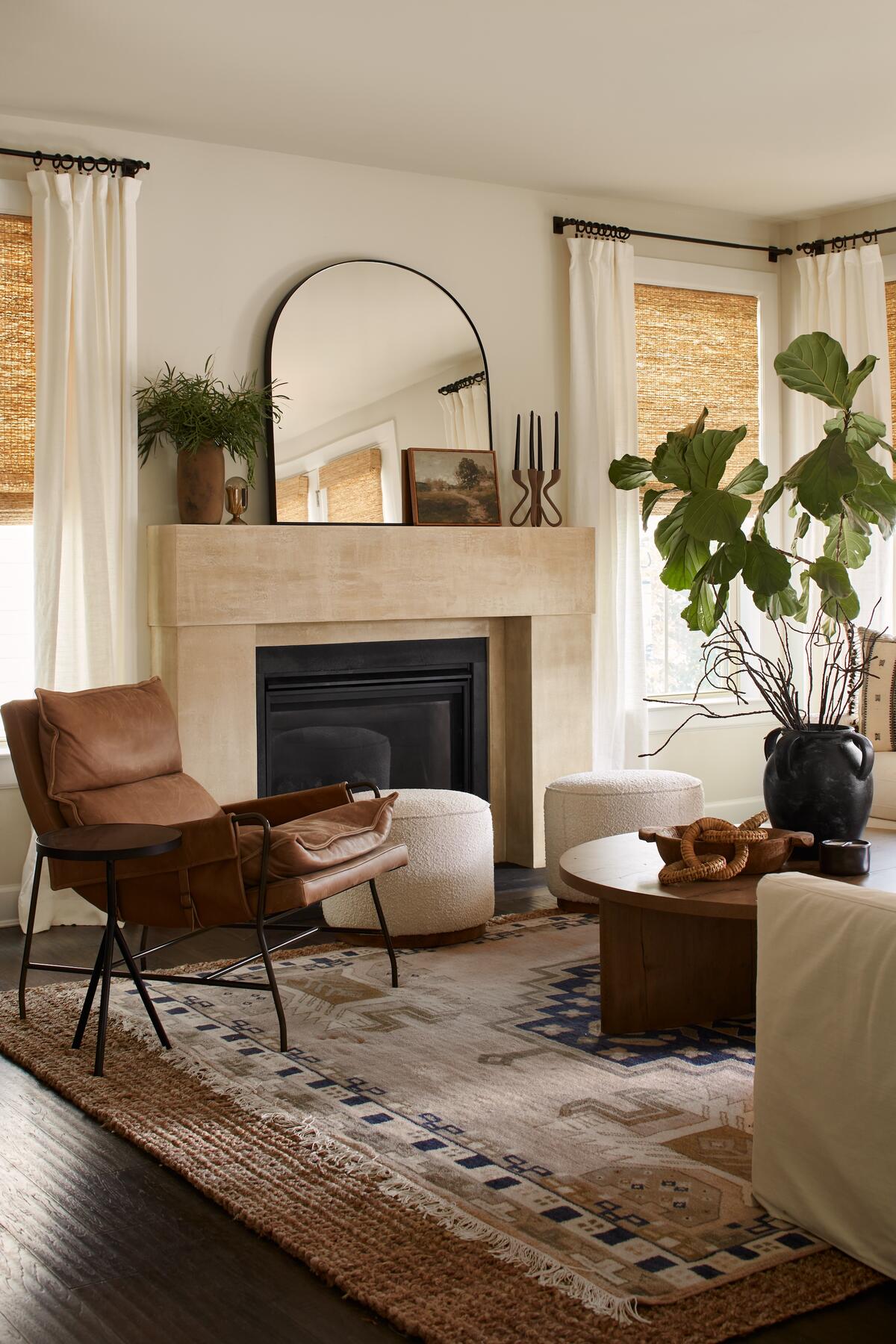

How have you approached sourcing at the full-service level? Are you still focused on the brands that you carry in the shop?
It’s definitely beneficial for us to source through our wholesale accounts—that’s where we always want to go, and from a business standpoint, that’s always the first place you start. That said, when you’re doing a full home, sometimes your needs are very specific, and you have to look elsewhere. It really depends on the project.
What does a full plate look like for the firm these days?
We’re typically working on three to four full homes—usually 3,500-to-5,000-square-foot houses—and that’s a full plate for the next 14 months.
Scope is a huge factor at the showroom level: Is it a living room, or is it a whole house? That team is awesome and so talented, and they can work on a pretty high volume—they could each be doing six to seven projects a month, but size is such a factor that it’s tough to say. It’s definitely an elevated experience. They’re taking the time to source through all of our vendors and make sure they’re putting the right piece in their proposal to present.
There’s something so interesting about that level of bespoke in-store service. So much of what’s changing in the industry is focused on the client who wants that in-the-middle experience. They can do some of it themselves, but they want the guidance and recommendations.
Maybe that’s social media showing them what their home can look like, but people’s appetite for that type of service has definitely grown. Clients are also becoming more educated about the design process.
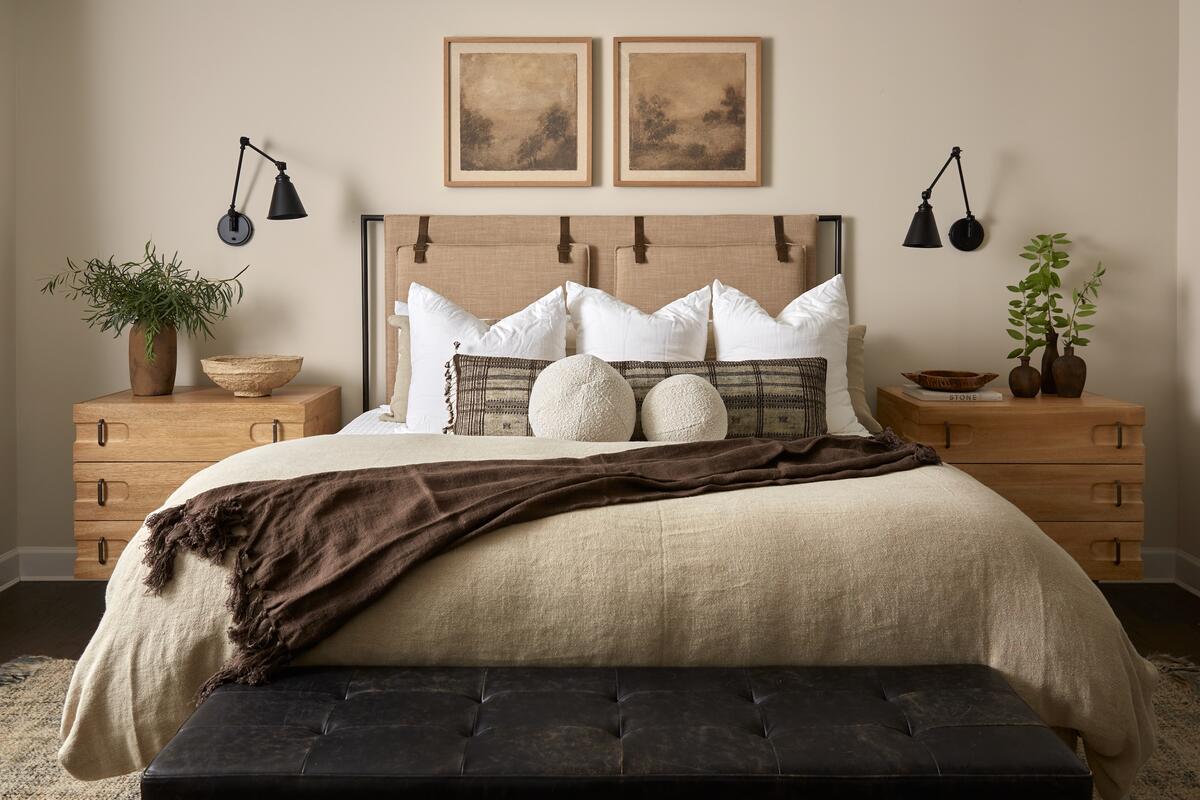
As we settle into February, how is business for you so far this year?
We’re getting into our “new projects time.” A lot of people we work with start to talk to us about new builds right about now. They’re in talks with builders now to break ground sometime in mid-to-late-summer; build through the fall, winter and spring; and then be in by the following summer.
Is that cadence pretty consistent? Can you really count on your pipeline to fill back up this time of year?
There is definitely, like you said, a cadence to it. But in the beginning of the year, there’s always this part of me that’s like, “Is anybody going to come through?” Twelve years in, I know it always comes through. But as a business owner, I think you just never lose that part of you that wonders, “What if I don’t have anything?” And then in January, February, and sometimes later into March, we start [getting inquiries] like, “Hey, we’ve been working with X architect. We have plans in the works with them, and we’re going to engineering, and we’re going to start talking to builders. What does your process look like from here on out?”
Who is your typical client?
Fenwick Island is one of the small towns in coastal Delaware. These beach homes are primarily second homes for people in the D.C. metro area, as well as some from Philadelphia, New Jersey, even New York. Some people come for the whole summer, but otherwise they’re here for the weekends. The properties themselves can vary—they can be little beach cottages, or the very expansive six-bedroom, seven-bathroom oceanfront houses with pools. There are also a lot of like track houses popping up, which is kind of a new thing for us in the last 10 to 15 years, where the big builders are coming in and building houses at a lower price point that are marketed as custom and go up fast—these people can get into their houses in, like, nine months. There are also clients who are buying houses with the idea that they are beach houses now but will ultimately retire in them.
How does that impact what your clients are looking for?
I’m very interested in bringing a more organic, elevated coastal look to the table. So much of what people have, and what they envision when they think of beach decor, is very kitschy—you know, fish on the wall—and it just doesn’t have to be like that. Our world is all muted tones, layered organic textures and mixed materials. It can be modern, or it can be traditional, but it’s elevated in a way that it doesn’t feel like it’s part of that beachy genre.
Some of the people we work with know what we do and are coming to us because that is a look that they’re trying to achieve. But then sometimes people do just walk in the door and say, “This is it—this is what I’ve been looking for.” My goal now is to use our portfolio to sell people that aesthetic. Yes, they dropped six figures or more for that house, but that’s not everybody, and maybe you could achieve some of that by coming in and buying a lamp from us.

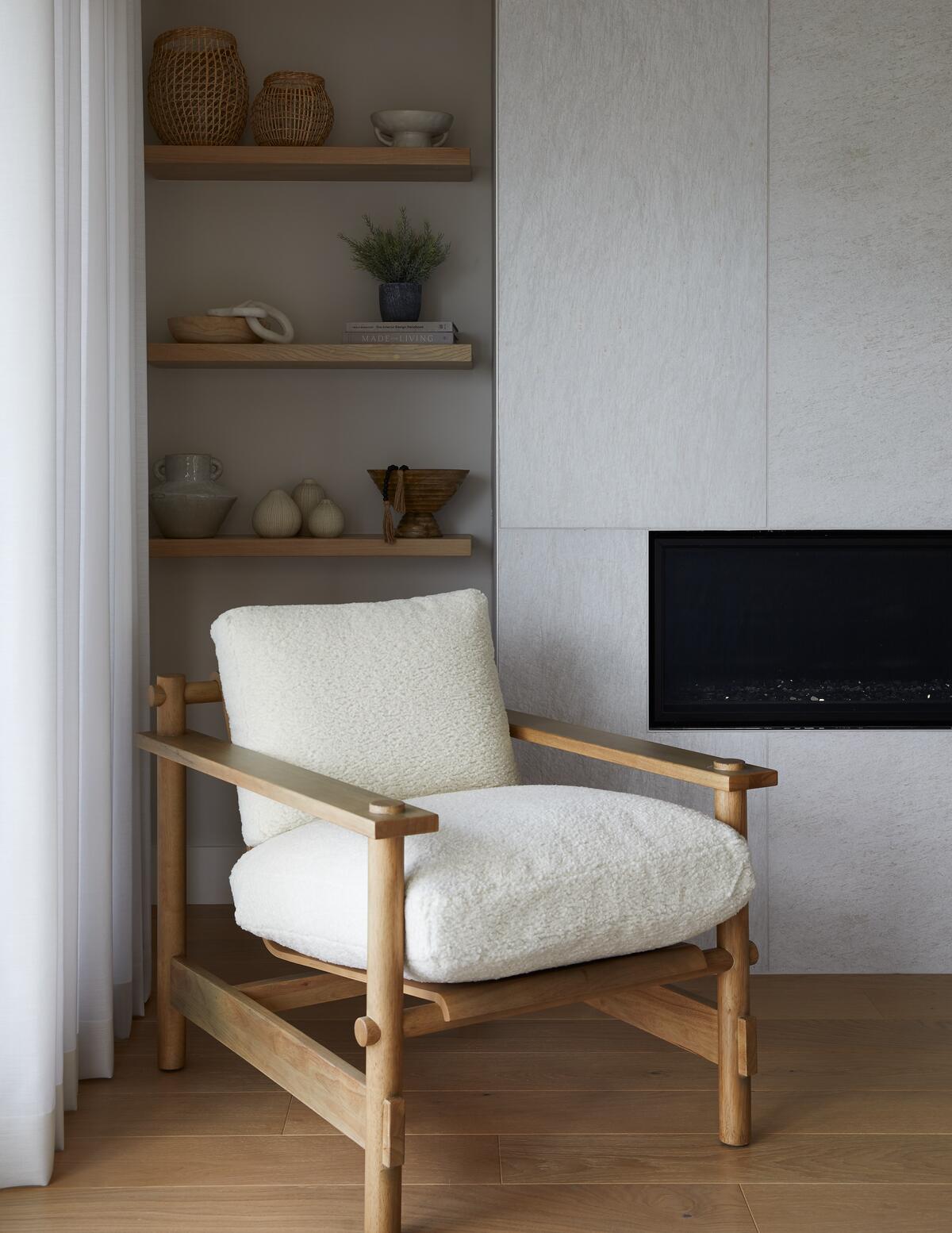
Where do you see opportunities to grow? Or how do you see the business evolving?
Things are going to start shifting more and more online—and I hate that, to be honest. I’m a brick-and-mortar, small-business person through and through. There’s such a romance to walking in and getting the feel of a showroom and seeing things in person that gets lost in the e-commerce world, but it’s probably where we’ll be looking to grow in the future. We have an online presence now, but it’s very small.
How does that work with some of the wholesale vendors that you partner with?
It can be challenging. There’s a lot that I feel comfortable with because I know that we’re receiving it ourselves and delivering it—we have hands on it through the whole experience, and we’re making sure it gets there safely. You obviously lose that aspect with e-commerce. We are definitely pretty particular about working with vendors we know will remedy issues if they’re a little bit more out of our hands, and we are more interested in moving forward with those companies when we’re pursuing [online sales] in the future. High Point Market is also key for us. That’s where I am able to really see—maybe a vendor wasn’t a big part of our company in the last couple years, but what they’re introducing and where they’re going could be an integral part of how we’re moving forward.
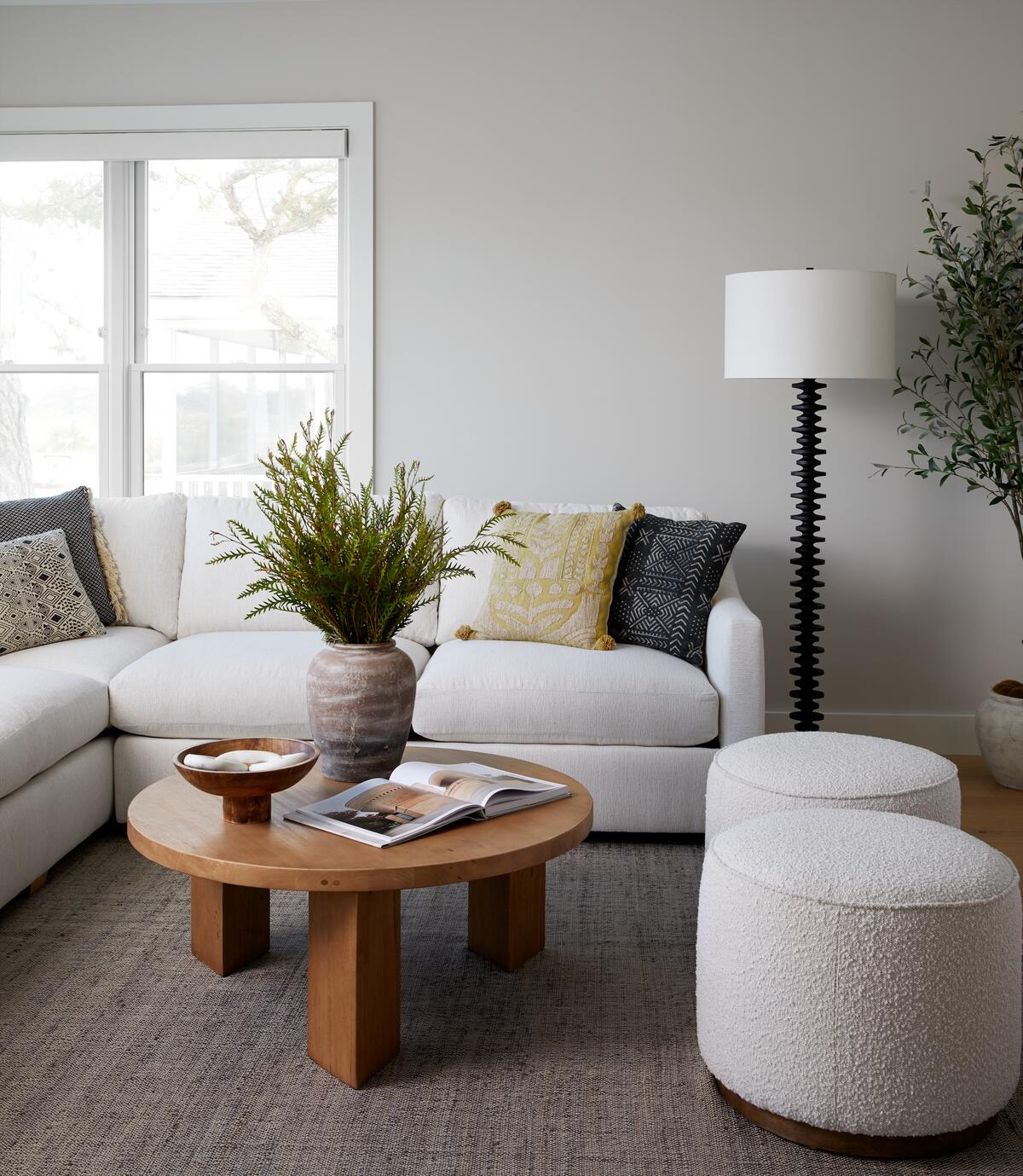
How have you approached billing for the firm’s work on the design side?
We bill hourly for full-service design. I have a couple conversations with a potential client where we discuss the scope of the project and what they’re hoping to achieve with it. Then I put together a proposal that estimates [a range of] what I think the work should cost so they have a sense of where they’re going to land with fees.
If they’re working in the shop, that’s a little bit more casual. We typically take a retainer based on what they’re asking us to do, and it sits on account. The team presents, and then that retainer rolls into a credit once they end up making their purchases.
That level of service requires more experienced team members—and it’s a big investment. How did you make that work for the business?
Right out of the gate, I was so incredibly lucky to find team members that just got the look and vibe we are putting out there. I’ve had trained designers working for me, doing incredible stuff—delivering a rendering for a living room. The clients, who are essentially paying no hourly service for that, were blown away. Some maybe didn’t even appreciate it, but a lot of them were like, “Maybe I just was in here for a couple of sofas, but now I’m buying an entire living room.”
Does it always click? No. Sometimes we get in a situation where we’re working with somebody who doesn’t appreciate that aspect of what we’re offering—that’s where the retainer comes in, because that kind of person is usually pretty swayed not to commit to move forward. But more times than not, people are pretty receptive to it.
What does success look like for you?
Success is being able to feel happy and fulfilled with what I’m doing and feeling comfortable with where the business is growing. It’s so easy to get distracted with the day-to-day. We all have lives outside of our businesses. How do you keep your eye on what your next steps need to be? It isn’t just the big picture—it’s all the baby steps that you need to take to get there.
To learn more about Katie Winnington, visit her website or find her on Instagram.



















